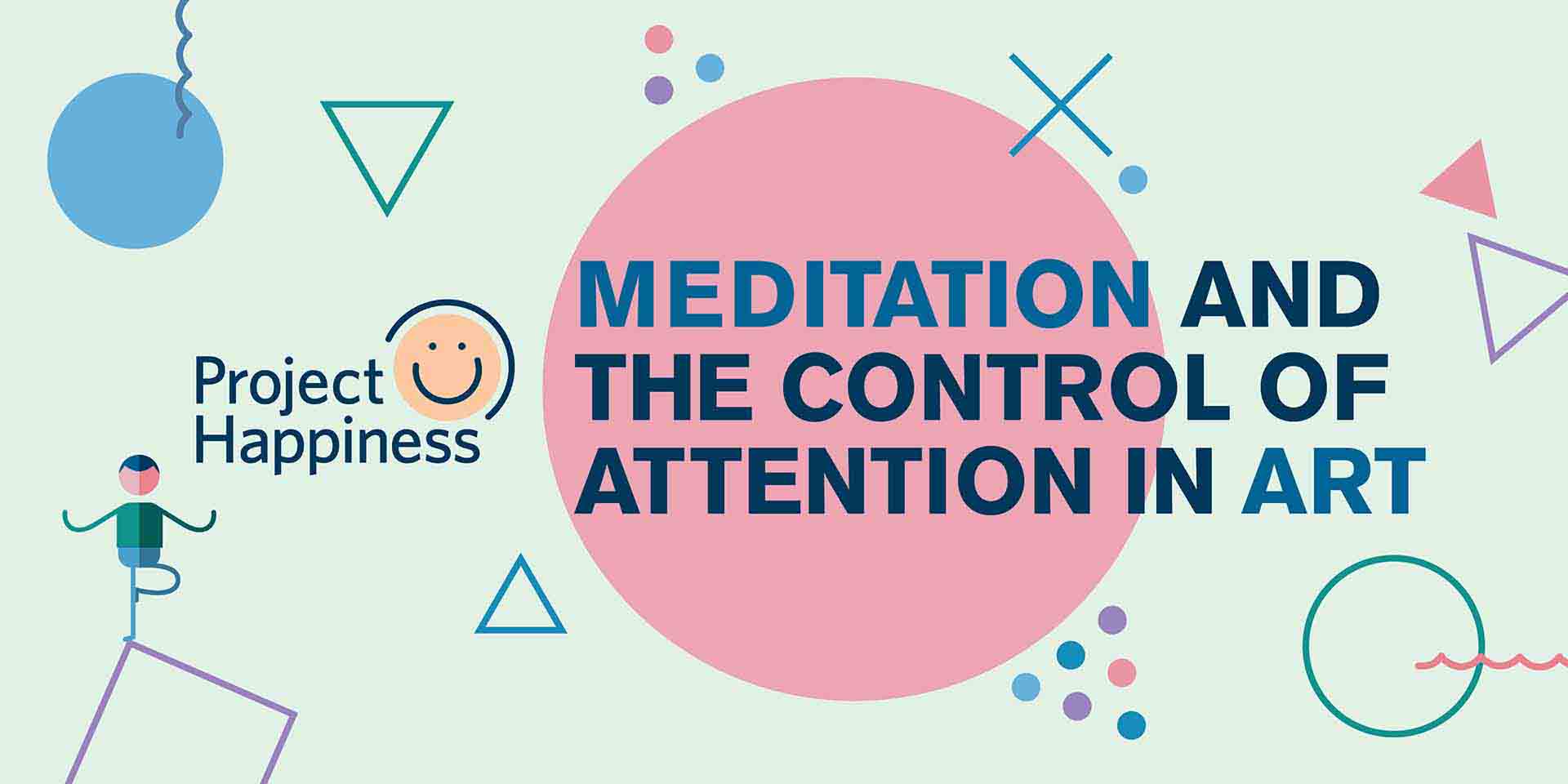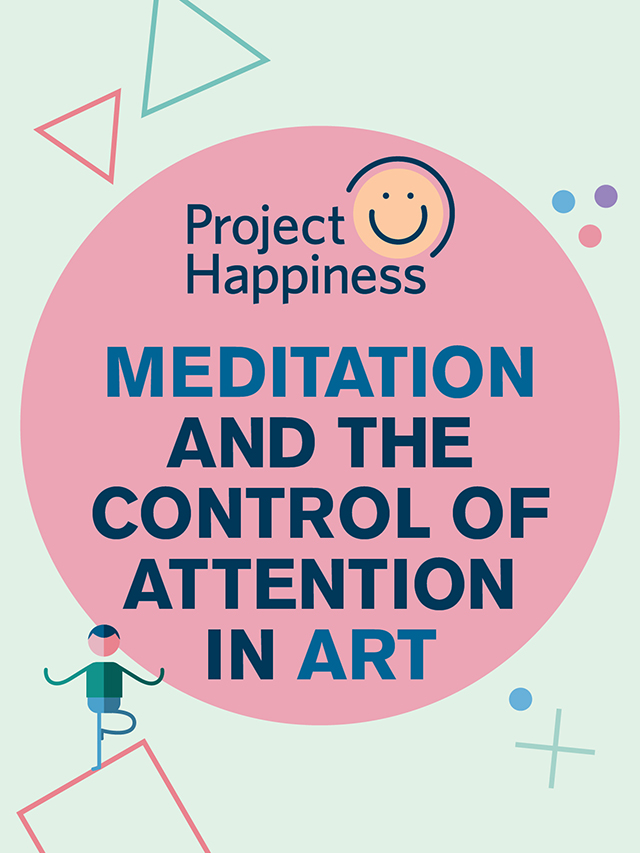Meditation and the Control of Attention in Art
PART 2 OF 4
How do we contemplate an artwork? Dr Russell Chan shares how to deepen your concentration and enhance your experience of art through the practice of focused-attention meditation.
A large masterpiece greets you at the entrance as you begin your afternoon at the museum. You might first admire its composition from afar before moving closer. Taking a step forward, you lean in to inspect the artwork label and a reflective moment passes before you lift your head to study the corresponding details in the artwork. This moment of inference concludes, so you return your attention to the artwork as a whole. All this is done unconsciously; actions we hardly notice.
In making meaning of an artwork, we often focus on the elements that are most prominent to us such as objects, colours, shapes, emotions and facial expressions. We may be predominantly using our vision, but the core cognitive function that our brain is using is attention, not visual abilities.
– William James (1890), American psychologist
Focalisation is a central theme in James’s famous quote. The attentional function acts like a “zoom lens” on a camera that prioritises goal-relevant information so that what remains in focus can be quickly understood by your mind1,2. This phenomenon is called attentional aperture and describes how attention can adopt a narrow or broad range based on the engaged task. For example, in paying attention to an artwork2-5 as described above, one has the ability to focus on both minute and broader features of the artwork. Attention changes because it is goal-driven, meaning that it follows what is needed to complete the most “current” task at hand.
How can we train our ability to pay attention to the details in an artwork? Attention is a cognitive function shared amongst many different tasks and we can enhance its efficiency through a type of meditation known as focused-attention meditation6,7. Research has shown that in as little as one single-session of focused-attention meditation, participants are able to experience an increase in attentional allocation, improved performance in subsequent learning tasks, and the ability to detect hidden stimuli8,9. These cognitive enhancements can help you to increase your appreciation of details in art.
In the Unwind with SAM | Art & Meditation sessions, I taught Yoga Nidra meditation: a form of focused-attention meditation that aims to enhance attention. When participants are less engaged or distracted, attentional lapses can occur which can be debilitating when you need to focus and complete a task. The practice of focused-attention meditation helps you to learn how to recognise and drop distractions to maintain focus.
Let us now focus our attention on Jing Quek’s work, Singapore Idols – Army Boys, another artwork in the SAM collection and apply what we have discussed in this article to it.

Jing Quek, Singapore Idols – Army Boys, 2006. Digital inkjet print on paper, 121.9 cm x 175.3 cm.
The Singapore Idols series celebrates the Everyman and everyday situations and environments in Singapore. In Army Boys, a large group of National Servicemen are posing in an outdoor training area in full military gear. They are seen striking confident, stylised poses, and are captured in a closely arranged composition, perhaps emphasising their solidarity with one another. Through these stylised portraits, the artist brings attention to the oft-overlooked individuals within them in his attempt to address (and subvert) constructions of identity, stereotypes and communities within Singapore10.
There are many details in this artwork. You may notice a consistent colour palette of green, brown, and black is used throughout the photograph. Or you may pick out that some men are sitting, squatting or standing. How do they look? Are they fierce or arrogant? What about their tools? Did you notice the mud on the tires of the truck? How about the driver who is sleeping? Does this photograph evoke any emotions in you? Gratitude for the men’s service or mixed emotions perhaps? Notice that they stand in solidarity together. Perhaps this might inspire feelings of trust as well. We explored these fine details during the Unwind with SAM | Art & Meditation Facebook Live sessions and in those instances, your attention was zooming in and out of the artwork’s details, narrowing and broadening in accordance to the instructions.
This mirrors the practice of focused-attention meditation in many ways. Focused-attention meditation styles will often turn our attention inwards, making us aware of different sensations of the body. This is called a body scan and this internalised focus is important, allowing subtle bodily sensations to arise. When we first view an artwork, we go through the same experience of witnessing these sensations. Research has shown that the regular practice of focused-attention meditation can consistently help us to recognise our moods, our emotions and understand how they arise in different situations6. This has knock-on effects in other areas in our lives that require the use of attention, including the appreciation of art. Combined with the method of visualisation that is employed in both meditation and art, it trains our attention and hones it in fresh ways.
In the next article, we will talk about how meditation enhances creativity by exploring a different practice of meditation known as open-monitoring, and apply it to a different artwork from the SAM collection.
This is the second part of a four-part article series on the science behind meditation and how to apply it to art. Please click here to read part one.
About the author
Dr Russell Chan is a neuroscientist. He is fascinated by the mind and its potential for cognitive performance. Using different neuroimaging techniques, Chan investigates how meditation can impact our health, well-being and performance. He has been a yoga and meditation teacher for the last eight years and is the Director of www.primeyourmindnow.com, a website examining meditation, spirituality, cognitive neuroscience and motor control. Over the next few weeks, as you explore the unique style of Yoga Nidra meditation with him, he hopes that you will enjoy the journey and come to a deeper understanding of the science behind meditation.
_____
References:
1 Eriksen CW, St James JD. Visual attention within and around the field of focal attention: a zoom lens model. Perception & psychophysics. 1986;40(4):225-240.
2 Lutz A, Jha AP, Dunne JD, Saron CD. Investigating the phenomenological matrix of mindfulness-related practices from a neurocognitive perspective. Am Psychol. 2015;70(7):632-658.
3 Eriksen CW, St. James JD. Visual attention within and around the field of focal attention: A zoom lens model. Perception & psychophysics. 1986;40(4):225-240.
4 Ingram RE. The International Encyclopedia of Depression. Springer Publishing Company; 2009.
5 Derakshan N, Ansari TL, Hansard M, Shoker L, Eysenck MW. Anxiety, inhibition, efficiency, and effectiveness. An investigation using antisaccade task. Exp Psychol. 2009;56(1):48-55.
6 Malinowski P. Neural mechanisms of attentional control in mindfulness meditation. Frontiers in neuroscience. 2013;7:8.
7 Tang YY, Holzel BK, Posner MI. The neuroscience of mindfulness meditation. Nature reviews Neuroscience. 2015;16(4):213-225.
8 Colzato LS, van der Wel P, Sellaro R, Hommel B. A single bout of meditation biases cognitive control but not attentional focusing: Evidence from the global-local task. Consciousness and cognition. 2016;39:1-7.
9 Chan RW, Immink MA, Lushington K. The influence of focused-attention meditation states on the cognitive control of sequence learning. Consciousness and cognition. 2017;55:11-25.
10 RootsSG. Singapore Idols - Army Boys (Jing Quek). RootsSG. https://www.roots.sg/learn/collections/listing/1324988. Published 2006. Accessed 08/07/2020, 2020.


